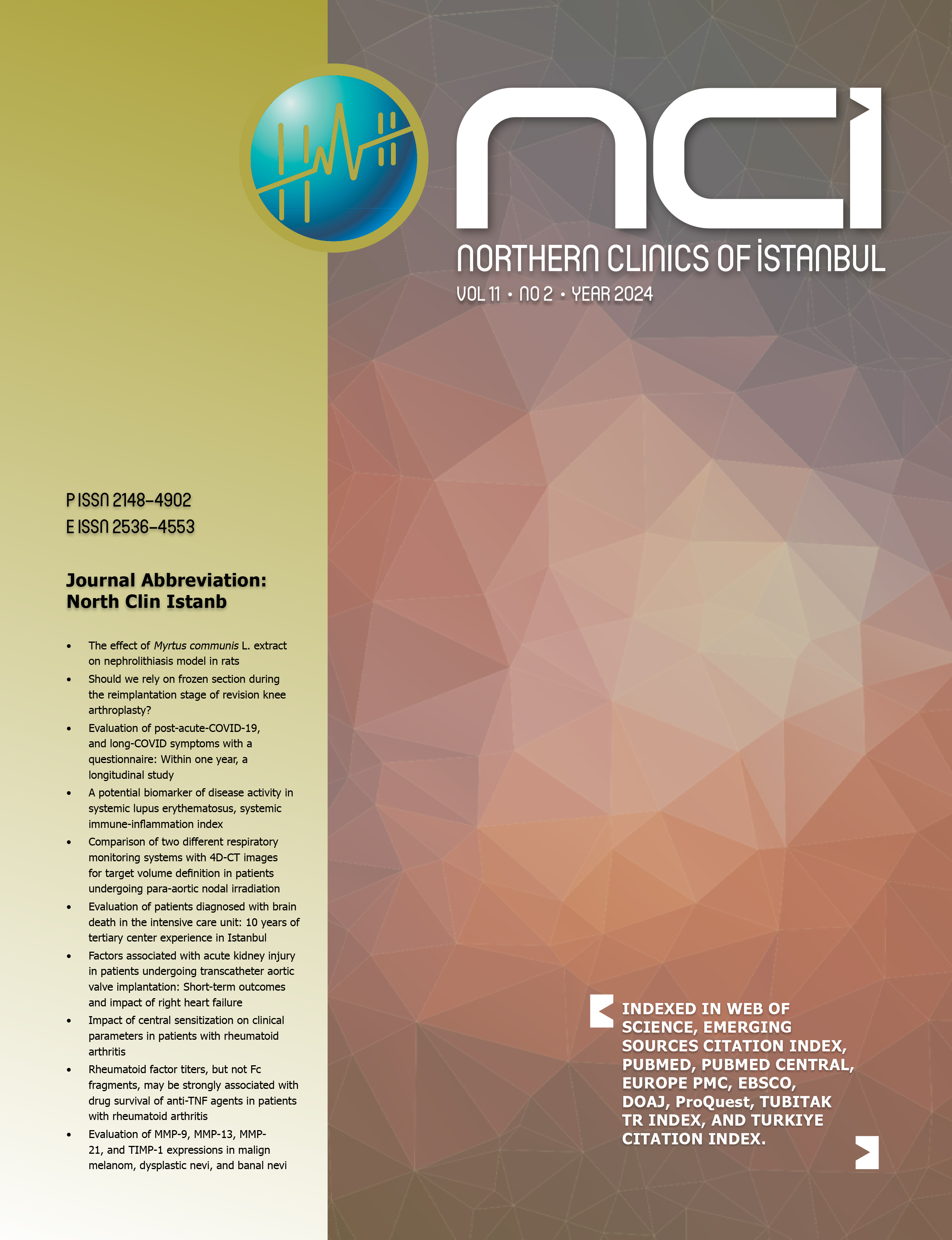Ranibizumab therapy for predominantly hemorrhagic neovascular age-related macular degeneration
Ozlem Dikmetas, Sibel Kadayifcilar, Bora Eldem, Ulkar FeyzullayevaDepartment of Ophthalmology, Hacettepe University Faculty of Medicine, Ankara, TurkeyOBJECTIVE: Predominantly hemorrhage represents one of the possible manifestations of choroidal neovascularisation (CNV) in eyes with age-related macular degeneration (AMD). The purpose of this study is to evaluate the effecte of ranibizumab treatment in patients with predominantly hemorrhagic CNV secondary to AMD.
METHODS: Twenty-five patients with predominantly hemorrhagic choroidal neovascularization due to AMD with at least three ranibizumab injections and followed up for at least 12 months were included in the study. The months of follow-up were recorded (baseline, 3rd, 6th, and 12th months). The change in central macular thickness (CMT) on optical coherence tomography, visual acuity (VA) in ETDRS letters, and lesion size on fundus fluorescein angiography were evaluated.
RESULTS: The mean age of the patients was 68.1±5.7 (range: 6382) years, the mean follow-up was 19.9±14.5 (range: 1267) months, and the mean number of injections was 4.0±1.4 (range: 315). The initial VA was 39.3±17.9 (range: 165) letters, CMT was 272.7±104 (range: 164587) μm, and the initial lesion width was 11.4±10.5 (range: 1.345.7) mm2. The VA was 41.4±20.1 (range: 575) and 36.9±21.8 (range: 480) letters (p=0.150), CMT was 270.7±110 (range: 159570) and 230.4±108 (range: 109667) μm (p=0.009) and the lesion width was 10.9±11.5 (range: 1.139.7) and 10.4±11.6 (range: 1.244.3) mm2 at 6th and 12th month, respectively. No factor was found to be associated with final CMT.
CONCLUSION: Although the final visual outcome is limited by the progression of the disease, hemorrhagic lesions treated with ranibizumab have stable anatomical outcome.
Keywords: Age-related macular degeneration, hemorrhagic; ranibizumab.
Baskın hemorajik tip neovasküler yaşa bağlı makula dejenerasyonunda Ranibizumab tedavisi
Ozlem Dikmetas, Sibel Kadayifcilar, Bora Eldem, Ulkar FeyzullayevaHacettepe Üniversitesi Tıp Fakültesi, Göz Hastalıkları Anabilim Dalı, AnkaraAmaç: Bu çalışmanın amacı baskın hemorajik tip yaşa bağlı makula dejenerasyonuna (YBMD) olan hastalarda intravitreal ranibizumab tedavisinin etkinliğini değerlendirmektir.
Materyal-Metod: En az üç intravitreal ranibizumab enjeksiyonu olan ve en az 12 ay izlenen baskın hemorajik tip YBMD olan 25 hasta çalışmaya dahil edildi. Optik koherens tomografide santral makula kalınlık (SMK) değişimi, ETDRS ile görme keskinliği (GK) ve fundus floresein anjiyografide lezyon boyutu değerlendirildi.
Bulgular: Hastaların ortalama yaşı 68.1 ± 5.7 (63-82) yıl, ortalama takip süresi 19.9 ± 14.5 (12-67) ay ve ortalama enjeksiyon sayısı 4.0±1.4 (3-15) idi. Başlangıç GK 39,3 ± 17,9 (1-65) harf, SMK 272,7 ± 104 (164-587) μm ve başlangıç lezyon genişliği 11,4 ± 10,5 (1,3-45,7) mm2 idi. GK 6 ayda 41,4 ± 20,1 (5-75), 12. Ayda 36,9 ± 21,8 (4-80) harf (p = 0,150), MMK 6. ayda 270,7 ± 110 (159-570), 12. ayda 230,4 ± 108 (109-667) μm (p = 0,009) ve lezyon genişliği altıncı ayda 10,9 ± 11,5 (1,1-39,7) ve 12. ayda 10,4 ± 11,6 (1,2-44,3) mm2 idi. Sonuç SMK ile ilişkili hiçbir faktör bulunamadı.
Sonuç: Sonuç görme keskinliği hastalığın ilerlemesi ile sınırlı olmasına rağmen, ranibizumab ile tedavi edilen hemorajik lezyonlar stabil anatomik sonuca sahiptir. (NCI-2021-3-33/R2)
Anahtar Kelimeler: yaşa bağlı makula dejenerasyonu, hemorajik, ranibizumab
Manuscript Language: English





















